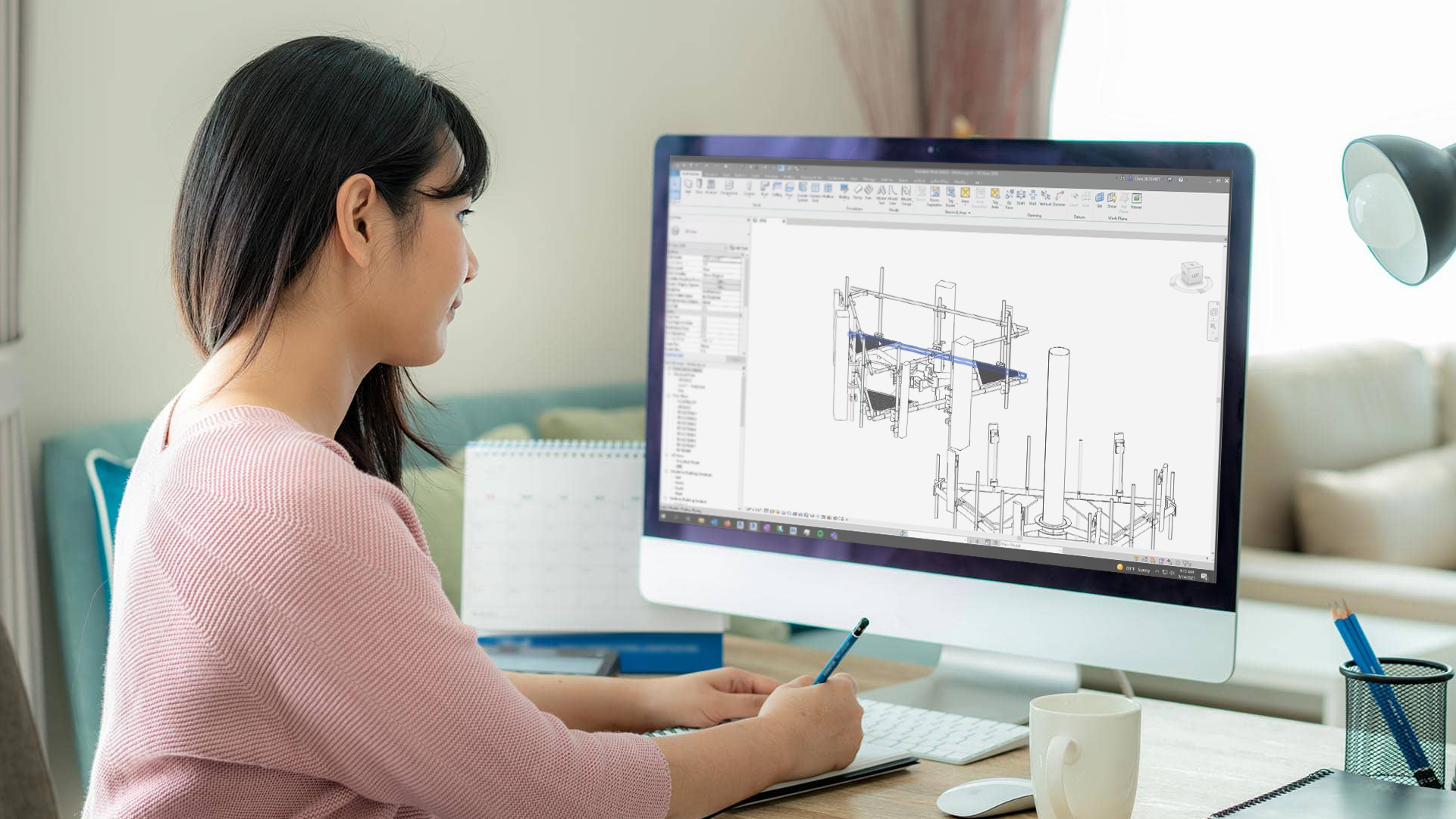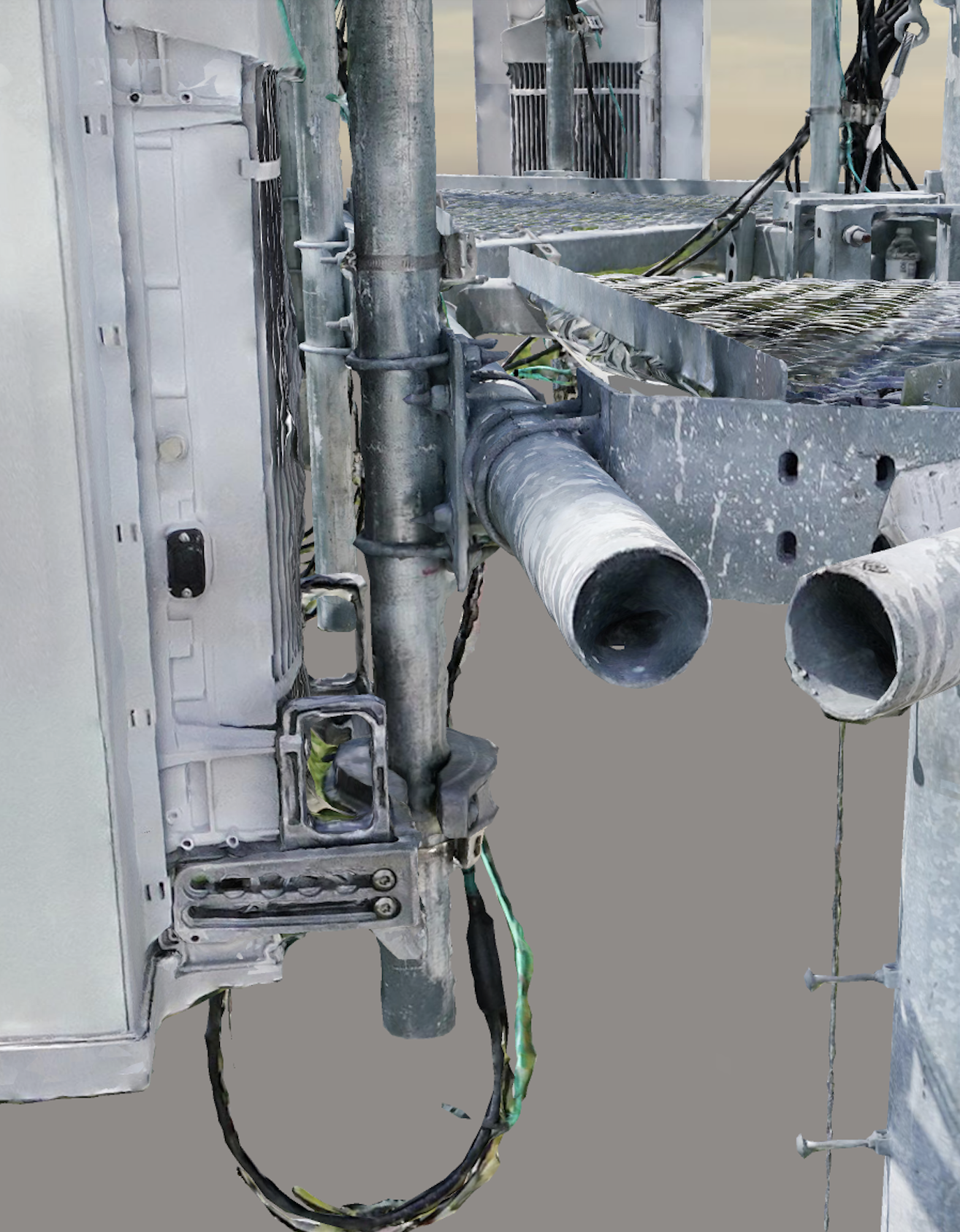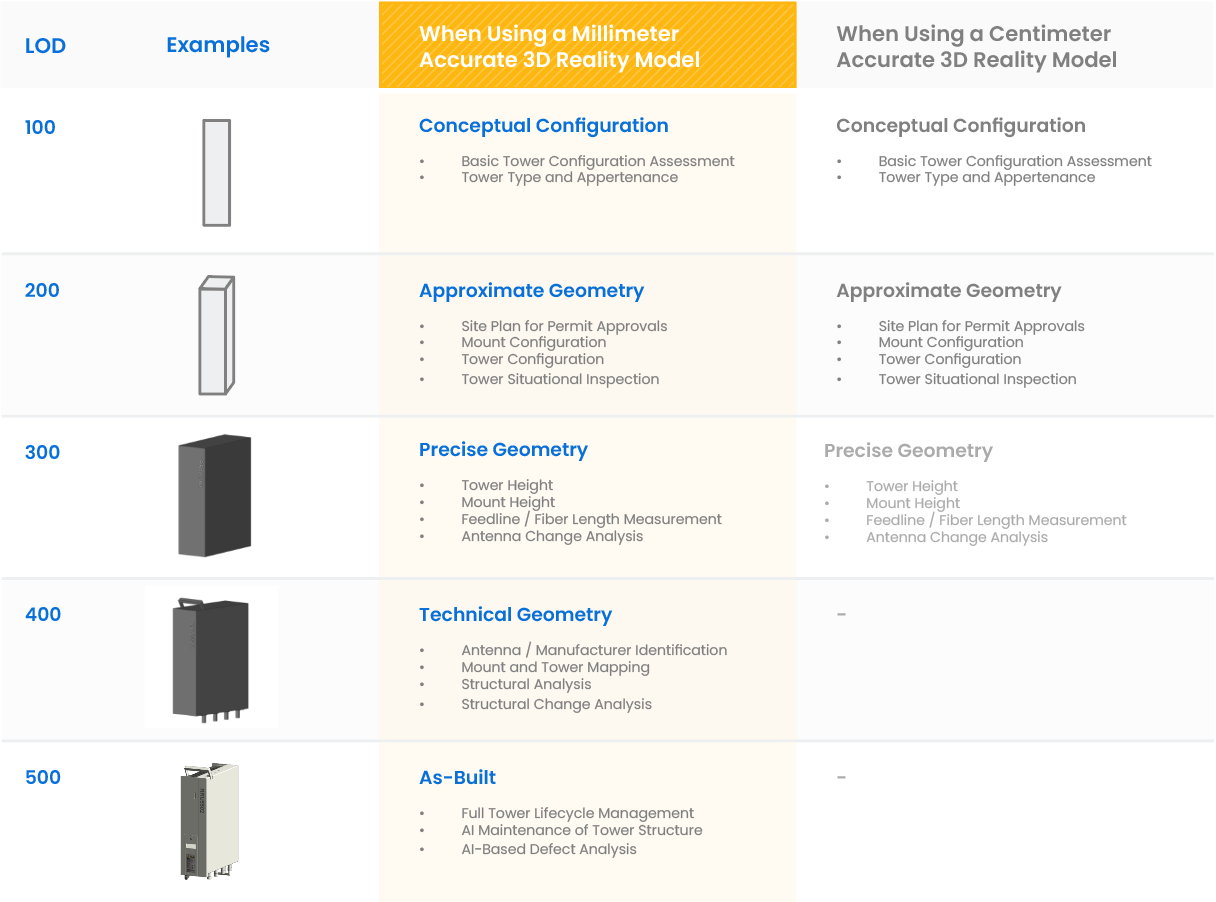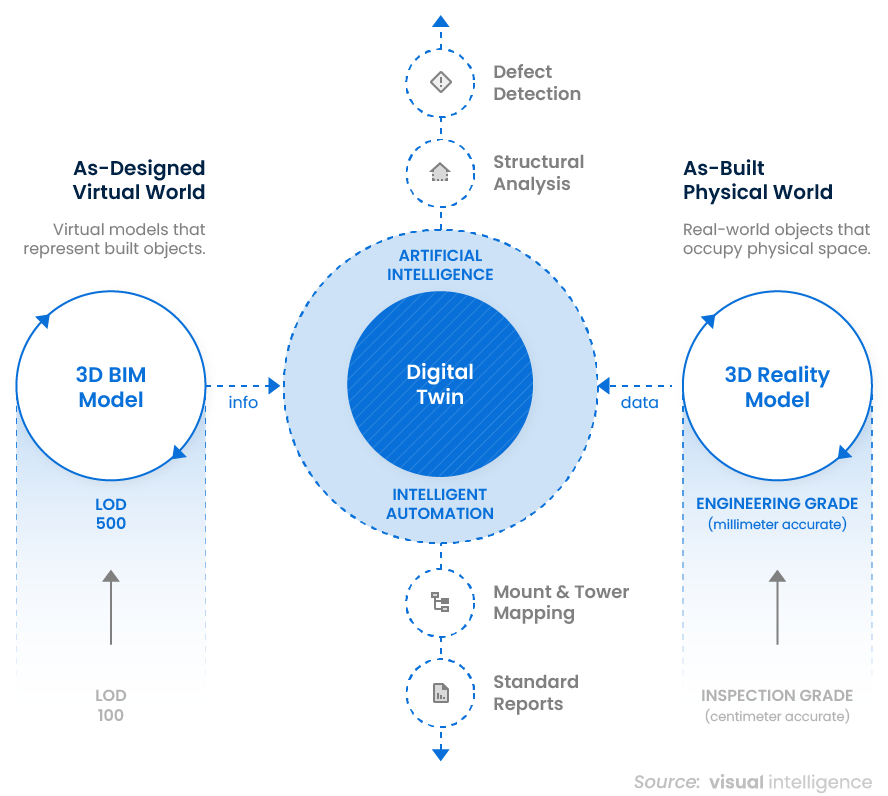3D Modeling, BIM and Digital Twins all represent digital reconstructions of physical assets…
ARTICLE
How Tower Digital Twins, BIM and 3D Models Fit Together
HOW TOWER DIGITAL TWINS, BIM & 3D MODELS FIT TOGETHER

Written by
Josh Meler
Chief Marketing Officer
3D Modeling, BIM and Digital Twins all represent digital reconstructions of physical assets. BIM is responsible for the design and construction that occurs on towers, 3D Reality Modeling is responsible for capturing as-built tower information, and Digital Twins are responsible for actively centralizing data and managing towers throughout their lifecycle.

The term “digital twin” is increasingly thrown around in Telecom. From articles in news publications, to tradeshow keynotes, to towercos issuing RFIs exploring capabilities – the industry is moving toward them. But what is a Digital Twin? How is it different than a 3d model? How do they relate to BIM?
What is a Digital Twin?
Let’s start with a definition.
In simple terms, Digital Twins are a complete digital replica (or twin) of your tower assets as they are in the real world. This includes the tower structure, mounted equipment, ground structures – everything. Digital twins ingest data from many disparate sources to provide one single source of truth for teams to pull data and insights from, enabling fact-based decisions and real-time automation that helps teams redesign and reengineer many existing workflows.
Digital Twin primary functions can be divided into three main categories:
MODELING
Twins provide an intuitive and quantifiable context for how a tower site is functioning and serving tenants.
SIMULATIONS
Twins provide a means to plan changes and see how modifications affect the tower structure and site.
MANAGEMENT
Twins provide up-to-date and complete site data for asset management, space planning and field operations.
Digital twin data is used for insights such as associating vendor inventory, structure and condition analytics, and report automation. Therefore, the data must be high quality, verified and referenced. In the case of a tower digital twin, the desired standard for measurable accuracy is engineering-grade.
The primary users of digital twins are engineers.
For Telecom, the primary user of digital twins are Engineers. At a basic level, an engineer’s job is to design, test and modify tower infrastructure through an asset’s lifecycle. They must validate whether equipment can be placed on towers, what additional capacity is available, and how it should perform in its environment. When a digital twin has the prerequisite millimeter-accurate 3d data needed for engineering-grade analysis, they can facilitate a number of use cases (see figure 1).
For tower companies who face request backlogs and must frequently outsource engineering operations, Digital Twins shift the paradigm to lower operational expenditures and accelerated revenue.
3D Reality Modeling
Digital Twins are built with data from the physical world. Because tower assets frequently change ownership and are visited by a diverse group of personnel, older legacy tower data is often untrustworthy. Therefore, to develop a reliable and functional Digital Twin, a high quality 3d model must be generated.
In the case of towers, because structures are tall and difficult to access, laser scans can only generate a partial dataset from the ground level. Hence, drone-based photogrammetry is the predominate method of collecting 3d tower data. Photogrammetry is the process of taking a series of overlapping photos of an object to triangulate x,y,z coordinates for each pixel, and then using this information to estimate the dimensions of a 3d model.
The 3d model feeds up-to-date data into analytics engines like OpenTower iQ to generate a digital twin and derive AI-based insights. The better the 3d data, the more useful the digital twin will be validating existing data and performing new analysis. When data is engineering-grade, meaning an engineer can take millimeter class measurements across 99% of the structure, engineers can run simulations on 3d models to address “what if” and “then what” questions. 3d models also provide a look backwards in time, providing a head-to-toe audit of tower sites before, during and after changes are made.
Digital twins are only as useful as the degree to which measurements and analysis approach the true real-world value.

Image 1: 3D Reality Model generated using a millimeter accurate drone sensor.
Building Information Modeling (BIM)
Digital Twins are a compliment to Building Information Modeling (BIM), and include data from designs (CAD models), manufacturing (parts manifest), and maintenance (maintenance logs).
It’s helpful to think about BIM as a layered view of a tower structure. The first layer might include design information about the tower structure, the next layer might be overlaid with an electrical diagram, and then information about manufacturer equipment, and so forth until every system is part of a complete model. BIM offers an up-to-date view of how a tower is designed, allowing personnel to peel back the layers to see how systems interact with one another. When a design change affects multiple tower systems, BIM provides a view of how the modification affects each layer and can simultaneously update information across layers after the change is complete.
To help standardize the levels of information a BIM model must possess, BIM is classified by Level of Detail (LOD). LOD provides specificity for the level of geometrical refinement required in a 3d model. Below are BIM LODs for tower infrastructure.
BIM LOD (LEVEL OF DETAIL) FOR TOWER ASSETS

Figure 2: BIM LOD Examples and what is achievable with millimeter and centimeter accurate 3d data.
How they fit together
3D Modeling, BIM and Digital Twins all represent a digital reconstruction of a physical asset, and are therefore often confused with one another.
In simple terms, BIM is responsible for designing and building that occurs on towers, 3D Reality Modeling is responsible for capturing as-built tower information, and Digital Twins are responsible for actively centralizing data and managing towers throughout their lifecycle.
CONNECTING DIGITAL TWINS, BIM & 3D MODELING

Figure 3: How Digital Twins relate to 3D Modeling and BIM.
What makes these categories different is how each functions to support tower assets. BIM was created to streamline and control the process of designing and building tower infrastructure, helping organizations control timelines, budget, and the outcome. 3D Reality Modelling provides a view of how a tower asset is actually built, and identifies issues with inventory, condition, or alignment. Digital Twins provide a past, present, and future view of a tower site, and help teams to understand available capacity, simulate modifications, or automate inspections and reporting.
Together, 3D Modeling, BIM and Digital Twins combine to provide a complete picture of tower assets and enable the next era Towers 2.0 and digital transformation.


